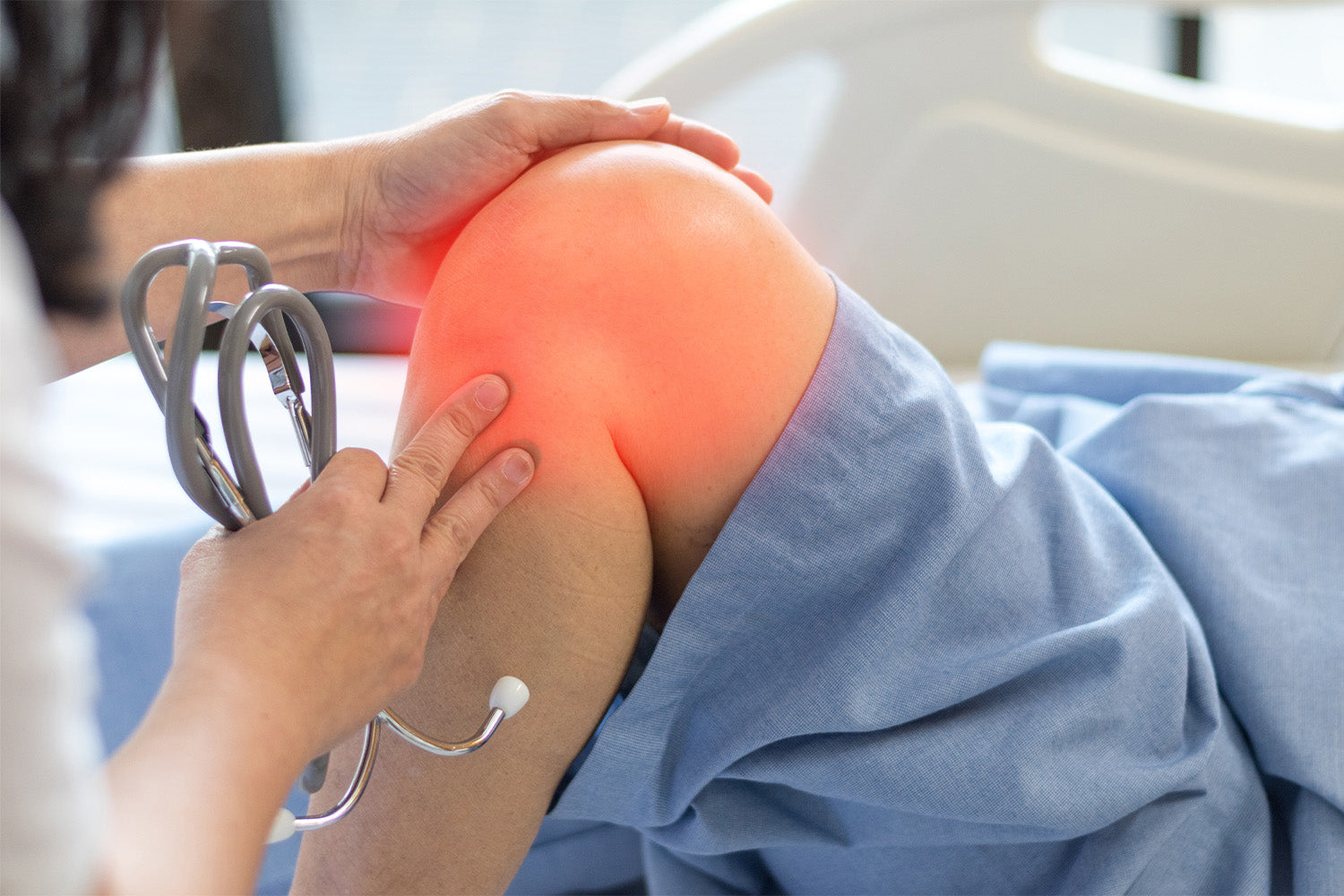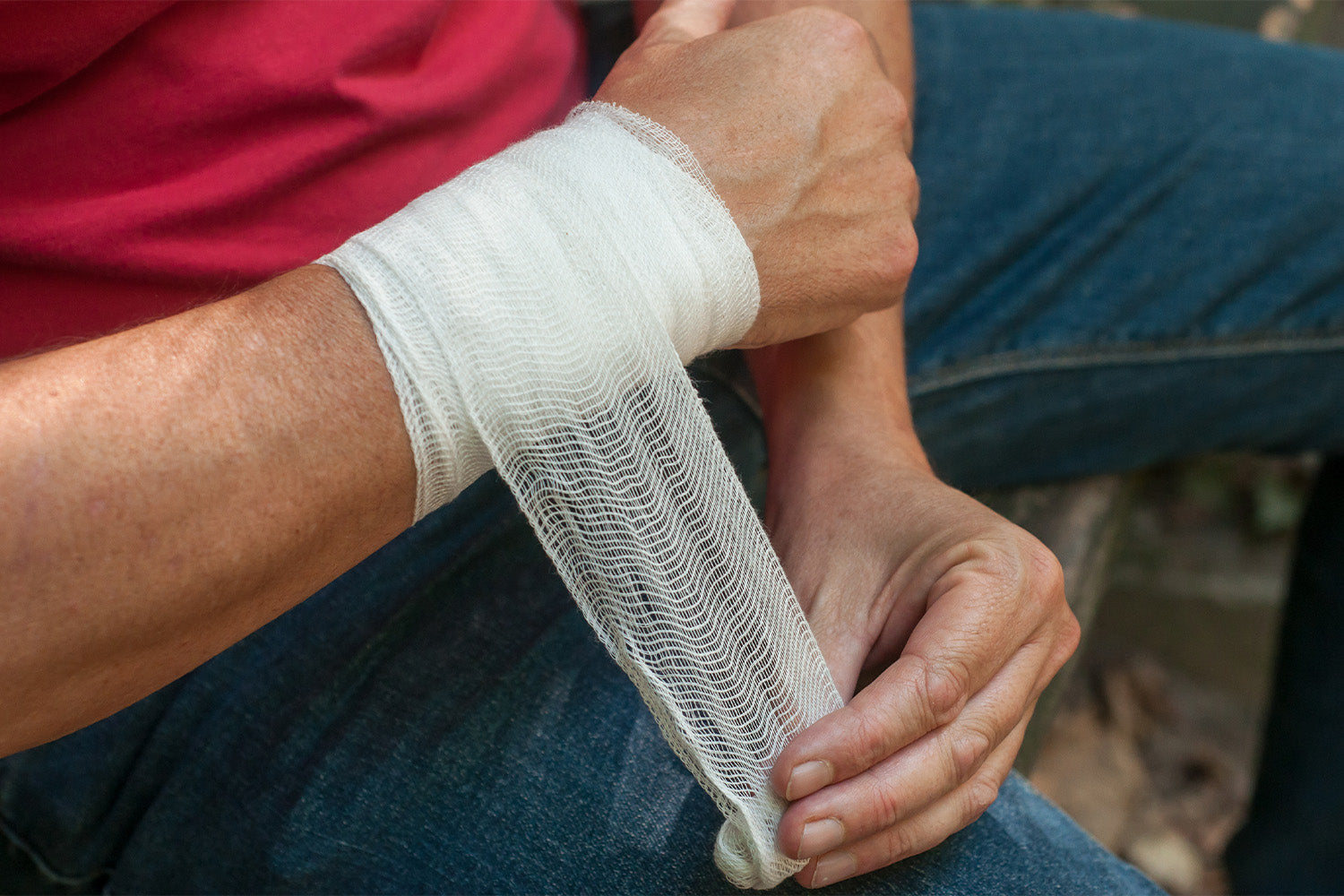Medically Reviewed By | Johannah Gregg, DNP FNP-C
Many different types of athletes are at a higher risk for wrist problems, whether it be an acute injury or a more chronic condition. Tennis players and baseball players are prone due to repetitive motions with their arms, and football and other contact-sport players are prone because of falls and hits.
One strategy to help support the wrist and reduce pain is to wrap it with a bandage. The advantages of wrapping a body part revolve around the ability of the individual to control and adjust the tightness. This makes for a customizable level of bracing that other methods don’t provide — average sleeves only have one “setting.”
Below, we are looking at what can go wrong with the wrist, how to wrap a problematic wrist, and what kinds of bandages are the most beneficial.
What Are the Most Common Wrist Injuries?
Below we are covering two of the most common wrist injuries that can be helped with a wrapped bandage.
Wrist Sprain and Strain
Your wrists contain small bones held together by a group of ligaments. Ligaments are connective tissue made up of tiny fibers that stretch with movement. A sprain occurs when these fibers stretch too far or tear (either partially or fully).
A fall absorbed by outstretched arms usually causes this very common injury.
Tendonitis in the Wrist
The tendons in your wrists connect the muscles in your forearms to the bones in your hands. Tendonitis occurs when these tendons become inflamed, usually due to overuse and repetitive motion.
How Do I Wrap a Wrist?
To get all the benefits out of wrapping a wrist, be sure you are using a bandage designed for this purpose, and you must do it the correct way. Here are the steps for wrapping a wrist:
1. Where To Start
With the arm with the affected wrist, hold your hand with your palm perpendicular to the floor (it should look like you’re reaching to shake someone’s hand). Then, place the end of the bandage that does not have the velcro attachment between your thumb and index finger, with the rest of the bandage falling on the side of your palm.
2. Begin To Wrap
If you are wrapping the left wrist, you will be going clockwise, and if you are wrapping the right wrist — counter-clockwise. Wrap around the hand once, then cross over to the other side of the thumb diagonally so the bandage wraps around the wrist. Repeat this process a few times, alternating in a criss-cross pattern on both sides of the thumb until you are out of bandage.
On the wrist area, it is important that you move up the wrist on each pass, overlapping at half of the previous layer.
3. Secure the Bandage
At the end, secure the bandage to itself with the velcro attachment. It’s important that the bandage is not too tight, as this can cut off your circulation — it should feel comfortable but still somewhat snug around the area.
Incrediwear Wrist Support
In addition to structural support, Incrediwear helps your body in a critical yet often overlooked way. The special fabric used to create our versatile bandage wraps and all of our other products is interwoven with unique semiconductors.
This fabric responds to the heat generated by your body by releasing negative ions through the skin and into the deeper tissues. Negative ions cause the cells to vibrate, focusing blood flow to the area.
The increase of blood to the wrist helps to supply the tissues with more oxygen and nutrients. This, in turn, reduces inflammation and facilitates the body’s natural healing process. Recovery is less painful and can be sped up significantly.
A big reason why athletes love our wraps and sleeves so much is that they can take advantage of their healing properties around the clock. While most activewear can only be beneficial during activity, Incrediwear is beneficial during activity and rest periods.
Wrap up your wrist or slide on a sleeve for an active recovery day or a day filled with couch time and bed rest. Below are our best offerings for innovative and effective wrist support:
2” and 5” Bandage Wraps
We offer two sizes of bandage wrap, 2-inch and 5-inch, for extra versatility and comfort. These provide great support for the wrist and can be easily adjusted for your preference of tightness.
The velcro attachments ensure a strong hold, so you’ll know they’ll stay put during a workout or game. Our wraps are perfect for first-aid kits and workout bags, as they can be used on other body parts besides the wrists.
Wrist Sleeve
The wrist sleeve has you covered if you want a wrist support option that doesn't require wrapping. It easily slides on over the hand for a low-profile, snug fit — wear it as your outermost layer or wear it underneath long sleeves and sweaters.
Fingerless Circulation Gloves
Another option for wrist support is our fingerless circulation gloves. They’re great if you don’t have issues specific to the wrist but in the whole wrist and hand area. The blood-flow-boosting fabric extends midway down the finger to the start of the forearm.
Summary
Wrists are a common problem area for many athletes — they take a lot of expected stress and unexpected impacts. Knowing how to wrap a wrist, whether on yourself or another person, is a valuable skill. Having a form of wrist support available (in a gym or tennis bag) is smart if you know you are prone to wrist issues.
Johannah Gregg, FNP-C says that by using a wrap, you are able to prevent the worsening of injuries, and can even reduce the amount of time it takes the injury to heal. By being proactive in your body's recovery, a person is able to promote the longevity of their wrists.
You can count on the Incrediwear bandage wrap (or any of our other wrist support options) to give yourself the best wrist support. Not only will they structurally brace the area to reduce pain, but they will also help to prevent future injury, allow you to perform better, and speed up the recovery process.
Sources:
Wrist Sprains - OrthoInfo | AAOS
Wrist Tendonitis: Symptoms, Causes & Treatment | Cleveland Clinic
Read more

Medically Reviewed By | Johannah Gregg, DNP FNP-C In our journey towards wellness, understanding and managing pain is essential. Whether acute pain from a recent sprain or a more chronic form of di...

Medically Reviewed By | Johannah Gregg, DNP FNP-C A lot can go wrong with the knees. Out of all the joints in the human body, they rank among the highest in sustained pressure and strain. Many peo...






Leave a comment
All comments are moderated before being published.
This site is protected by hCaptcha and the hCaptcha Privacy Policy and Terms of Service apply.